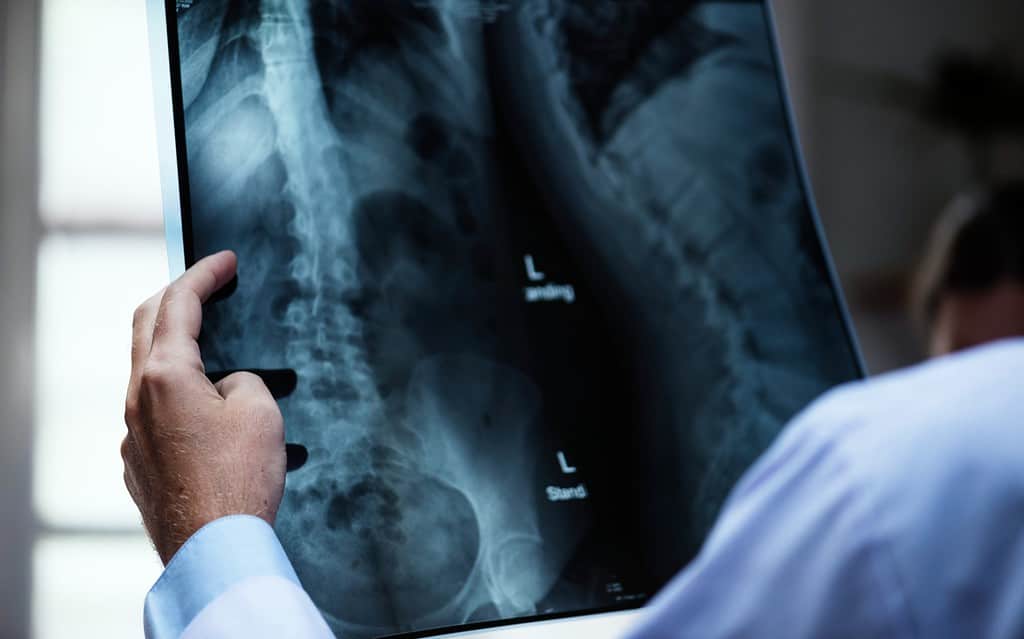Medical imaging has brought significant improvements to the diagnosis and treatment of numerous medical conditions in children and adults. However, the high dose of X-rays required for imaging poses significant health risks to patients due to the limitations of detector materials currently available.
This is where the new study comes in. Researchers have discovered a solar cell material capable of detecting X-ray dose rates over 250 times lower than the current best-performing detectors now used. This could one day make medical imaging safer and open up new opportunities in non-invasive diagnostics.

The material, bismuth oxyiodide (BiOI), is a nontoxic semiconductor that can absorb visible light and is stable in air. Because of its qualities, there’s been a growing interest in using it for solar cells that turn sunlight into electricity, photoelectrochemical cells that turn sunlight into fuels and energy harvesting to power smart devices.
“We have developed BiOI single crystals into X-ray detectors that work over 100 times better than the current state-of-the-art for medical imaging,” Robert Hoye, study lead from Oxford University, said in a statement. “BiOI is nontoxic, stable in air, and can be grown cost-effectively and at scale. We are very excited by the potential BiOI has.”
Turning BiOI into X-ray
BiOI has two heavy elements, bismuth and iodine. These give the material the ability to effectively absorb X-rays. However, previous attempts to develop BiOI as an X-ray detector were largely unsuccessful. This was because of substantial energy losses caused by defects resulting from the nanocrystalline structure of the detectors made.
Now, the researchers have created a technique to cultivate high-quality single crystals of BiOI using a scalable vapor-based method. The crystals have a very low density of defects, which played a key role in achieving stable currents. This was instrumental in enhancing the sensitivity and detection limit of BiOI for X-rays.
“Showing that these simply-processed, low-temperature grown, stable crystals can give such high sensitivity for X-ray detection is remarkable,” Judith Driscoll, study co-author, said. “We began working on this material several years ago, and we find it outshines other rival materials in a range of optoelectronic and sensing applications.”
The researchers formed an interdisciplinary team to understand the underlying reasons behind BiOI’s performance as an X-ray detector. They used advanced optical techniques to unravel intricate processes occurring within trillionths of a second, and ran simulations to establish links between these processes and what was happening at the atomic level.
In their study, the team unveiled a mechanism through which electrons interact with lattice vibrations in BiOI. In contrast to other compounds with bismuth and halides, the electrons remain delocalized, enabling swift movement within BiOI’s lattice. At the same time, the unusual coupling of electrons with lattice vibrations leads to irreversible energy loss.
However, the researchers discovered that these energy losses can be mitigated through two methods. First, by reducing the thermal energy through cooling the sample, and second, by applying an electric field to dislodge electrons from the lattice. The latter approach aligns perfectly with the operational principles of X-ray detectors.
“We have built a microscopic quantum mechanical model of electrons and ions that can fully explain the remarkable optoelectronic properties of BiOI that make it such a good material for X-ray detection,” Bartomeu Monserrat, study author, said. “This gives us a roadmap for designing even more materials with similarly advantageous properties.
Up next, the team is working on using the insights from this study to create materials that possess similar advantageous properties to BiOI. They are also working to extend the unique benefits of BiOI to society by developing methods to increase the size of BiOI detectors, while maintaining the exceptional properties observed in single crystals.
The study was published in the journal Nature.









